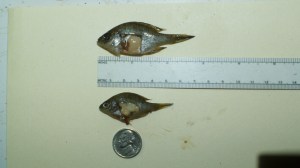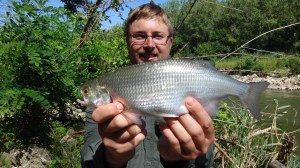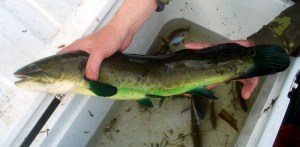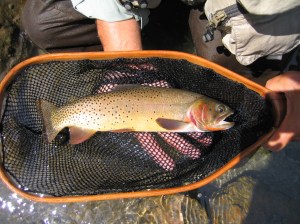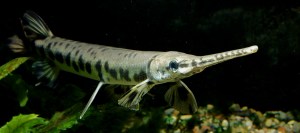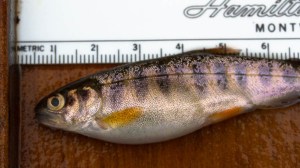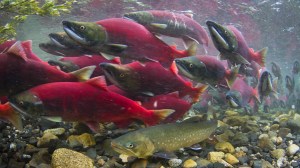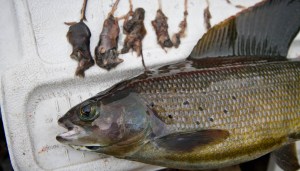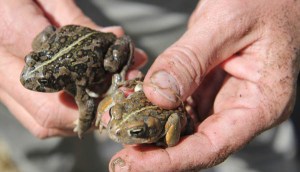Discover stories in Fish
Big Battles, Big Gonads: The Crazy World of the Bluegill Spawn
The common bluegill is easy to take for granted. But come spawning season, a bluegill colony is one of the wildest scenes in nature: part barroom brawl, part cheesy ‘80s romantic comedy.
Recovery: Alewives, the Little Fish with a Big Role
Conservationists are prone to referring to alewives in the past tense, the fish long considered a victim of dams. But they’re back. Ted Williams has the story.
Obsessed by Nature: The World of Fishy Life Listing
Most anglers are content with their bass and trout. But some want to catch…everything. Welcome to the world where fishing meets life listing.
Adventures with Bowfin, North America’s Underdog(fish)
The bowfin has proven tougher than T. rex. But is it tough enough to survive humanity?
Recovery: The Return of Native Fish, Victims of Bucket Biology
Restoring arctic char; they are rarely seen, even by anglers; they are furless, featherless and cold. But they are wildlife – ice-age relicts as important to our nation as California condors.
It’s Time to End the Gar Wars
Imagine anglers piling hundreds of dead trout they've killed along stream banks. Not gonna happen, right? But it's still happening with gar, and outdoor magazines celebrate it. Why it's time to end the gar wars.
Got Gonads?
Everyone knows her as the gonad girl. And she owns it. Social media meets traditional knowledge in an effort to improve Hawaiian fisheries management.
Binge ‘Til You Burst: Feast & Famine on Alaskan Salmon Rivers
It's a glorious all-you-can-eat buffet -- followed by months of starvation. The inner workings of a salmon stream are even wilder and more complex than you imagined. New research sheds light on life in a feast and famine world.
A Sucker (Myth) Is Born Every Minute
Everything you've heard about suckers is probably wrong. But could a new generation of anglers and self-described "fish nerds" not only rescue the sucker's image, but point a new way for freshwater conservation?
In Synch: Char & Salmon Migrations in Warming Waters
In Southeast Alaska, salmon are changing their annual migration patterns due to warming waters. Will one of their main predators -- Dolly Varden char -- adapt to the change?
Big Gulp: How Often Do Trout and Grayling Eat Mammals?
Many anglers know that trout eat the occasional mouse or shrew. But how often does this actually occur? New research from Bristol Bay on the dietary habits of rainbow trout and grayling suggests this answer: More often than you think.
Protecting the Amargosa: From Suspicion to Support for a Desert River
Anti-environmental sentiments in rural Nevada have been in the news a lot lately. Here's a different narrative. In the Mojave Desert of remote Nevada and California, conservationists are part of the community and working to overcome suspicion to protect a vibrant river.
